This highly vital staging demonstrates Carpeaux's technical virtuosity and expressive sensitivity, as he successfully blended movement, grace, and complexity into a monumental work intended for public spaces. Given the considerable success of this creation, Carpeaux decided to develop smaller versions of this motif that could be distributed to art lovers. In 1870, he created an adaptation in the form of a bust, known as "Spring No. 1" or "Bust of Flora," which allowed him to concentrate the expressive essence of the original figure in a more intimate format, accessible to private collectors. The artist offered several types of editions of this bust. The terracotta copies, produced in significant quantities, were widely distributed and contributed to the work's renown.
Manufacture nationale de Sèvres obtains authorization to produce copies of the Bust of Flora in biscuit porcelain. Through these variations, Carpeaux perfectly illustrates the way in which a monumental creation intended for urban ornamentation can find a second life in the more intimate world of private collections, while retaining the plastic richness and poetic impetus that made it initially successful.
The "Spring", or "Bust of Flora", proof in white biscuit porcelain, without glaze, revealing a matte appearance, Published for the museum of the Manufacture.
Bears the mark MM and the stamp Sèvres as well as the date 1986.
Perfect condition.
Height: 51 cm



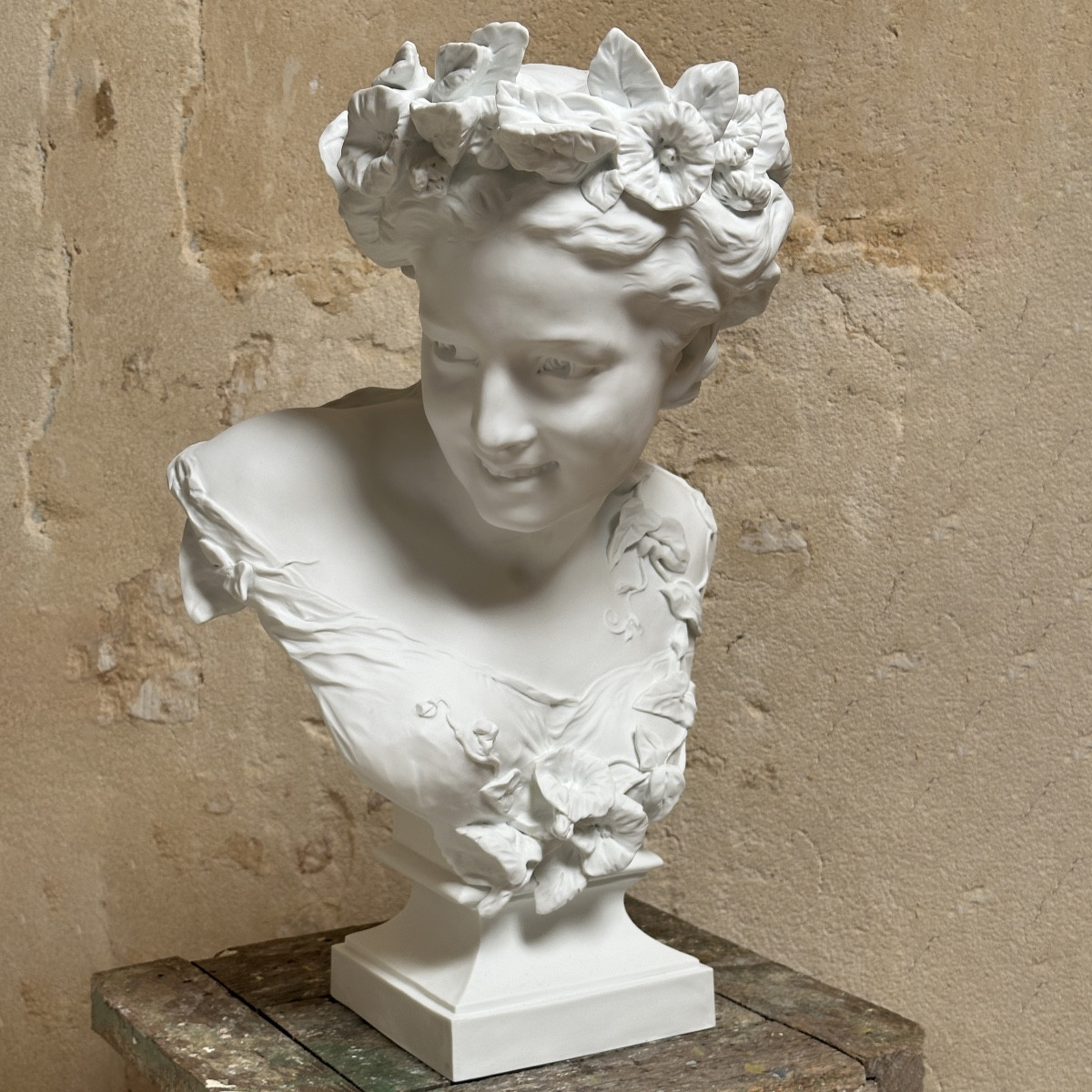

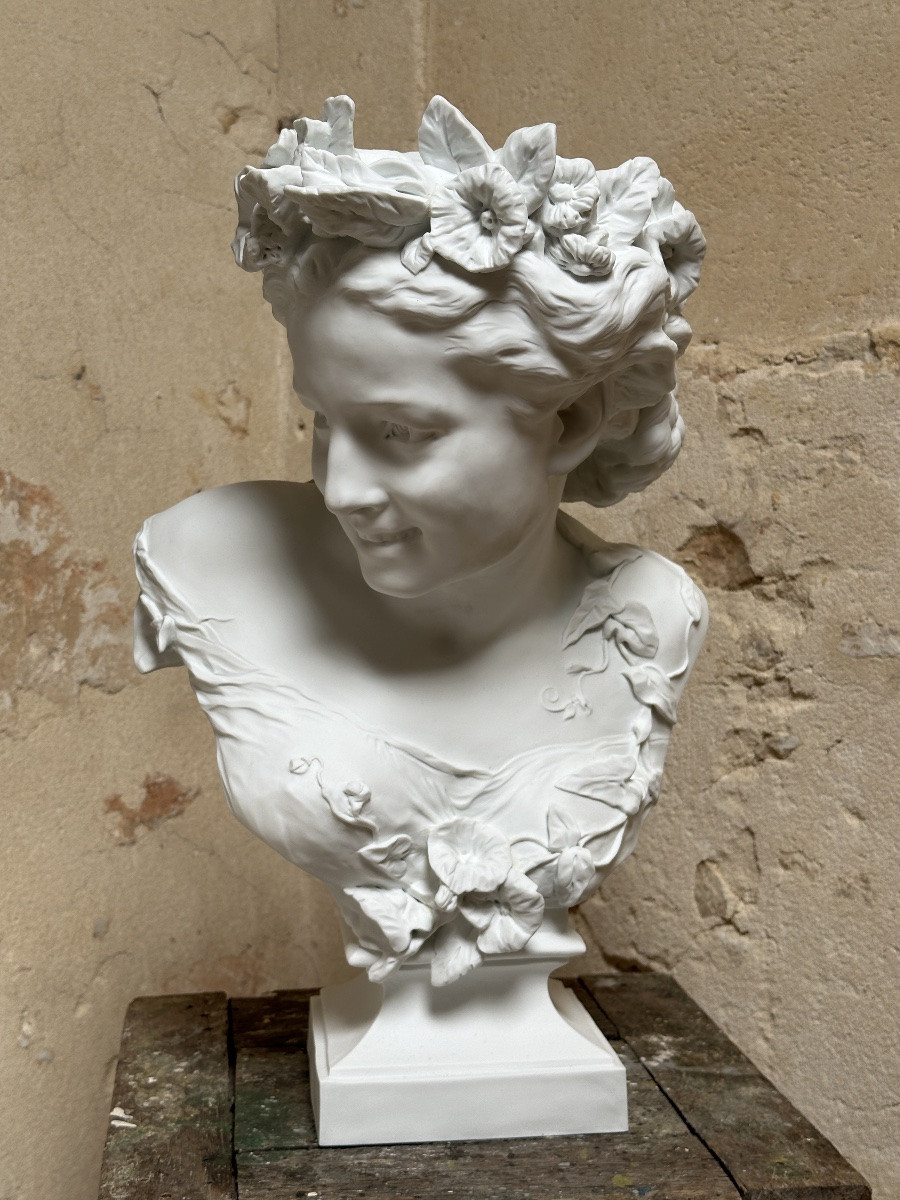
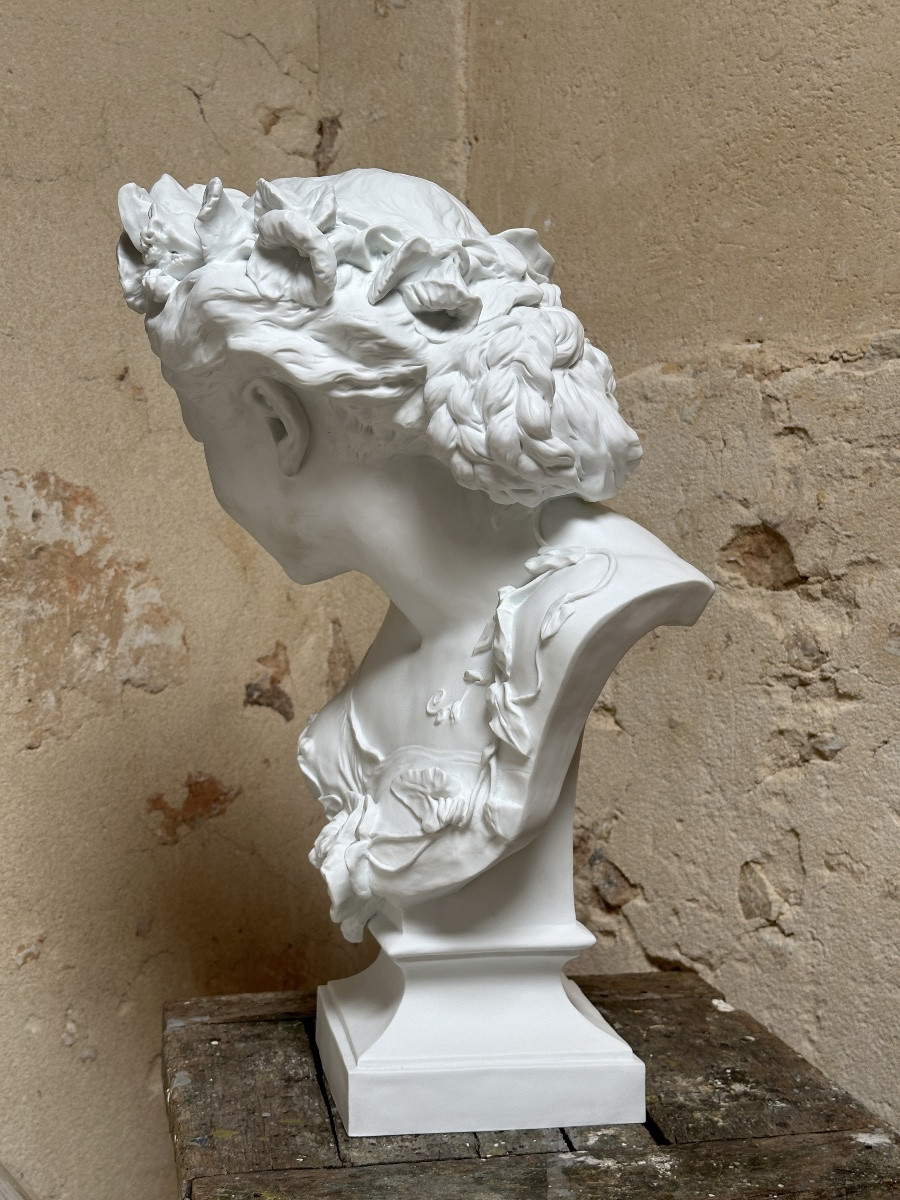
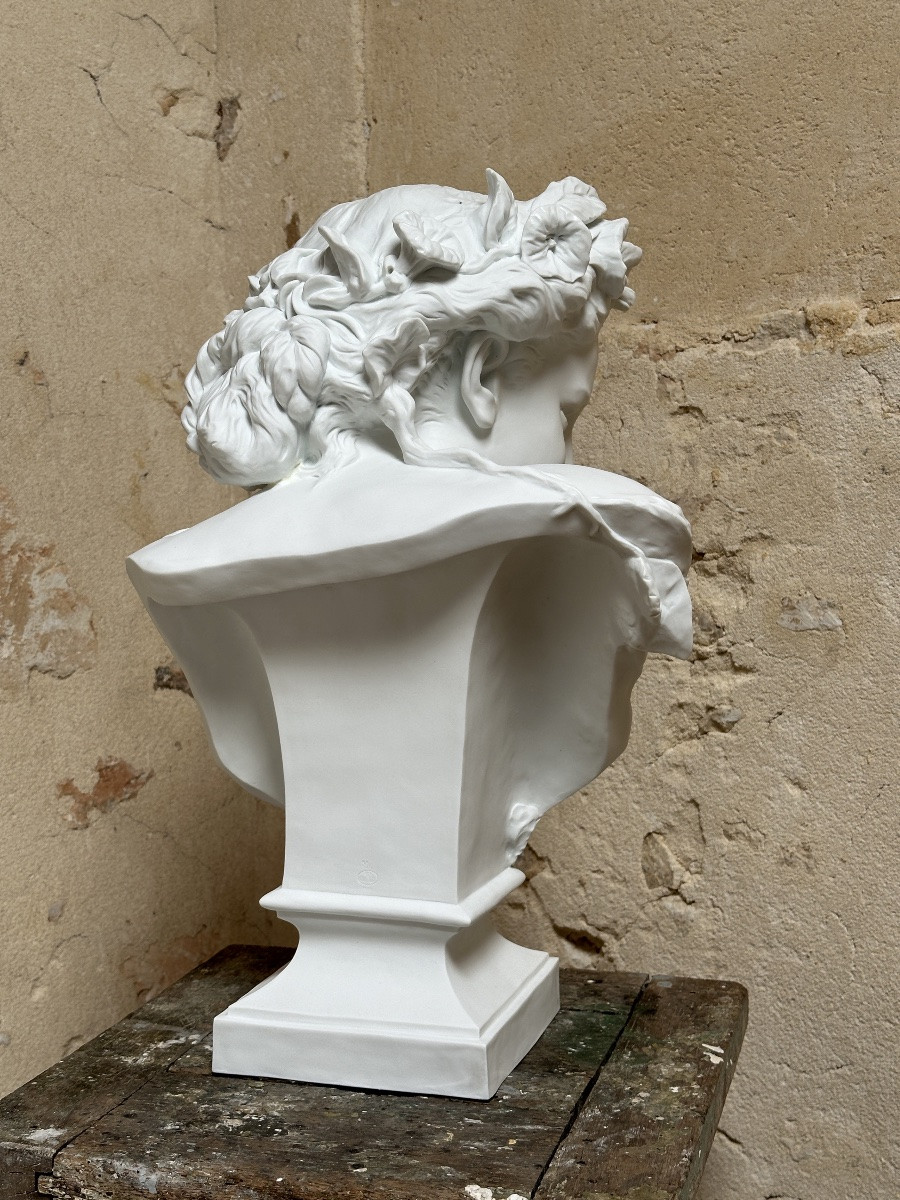




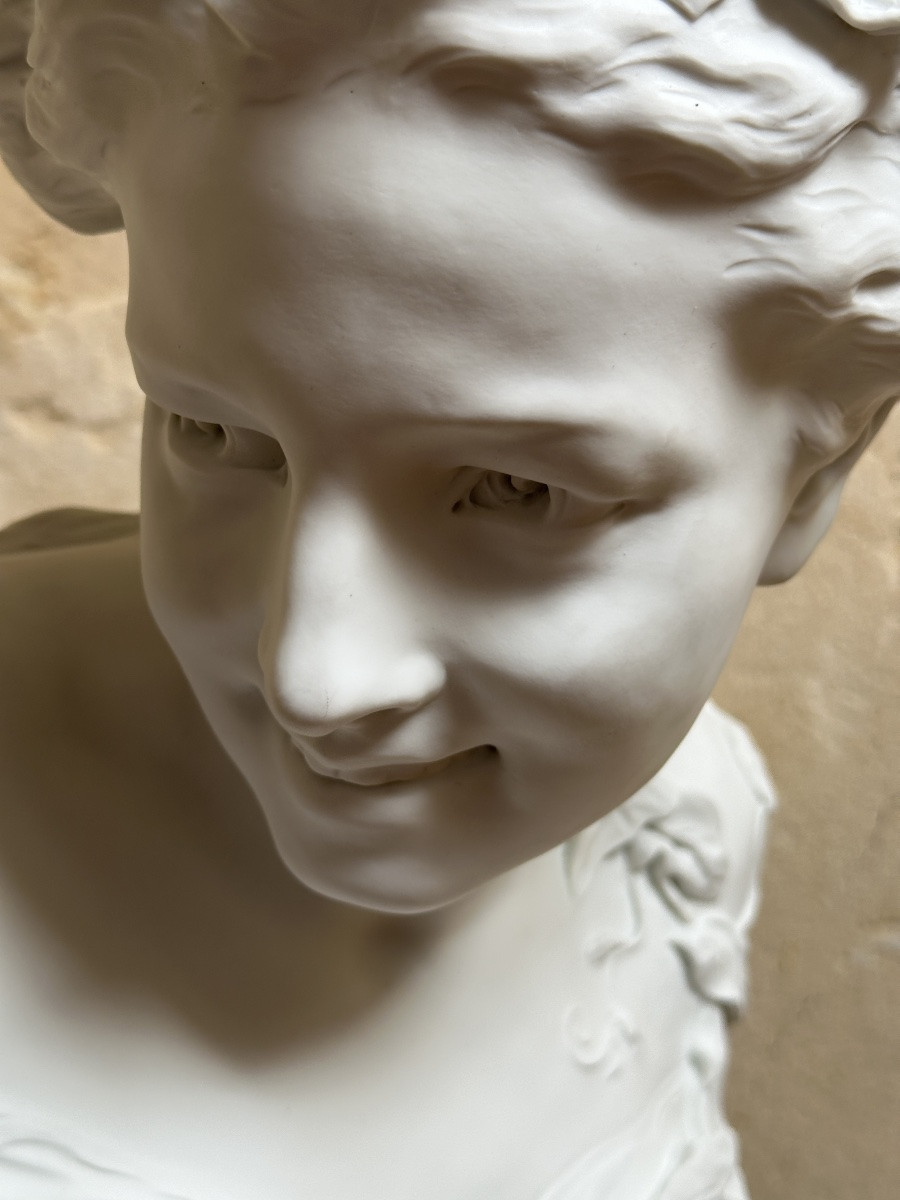
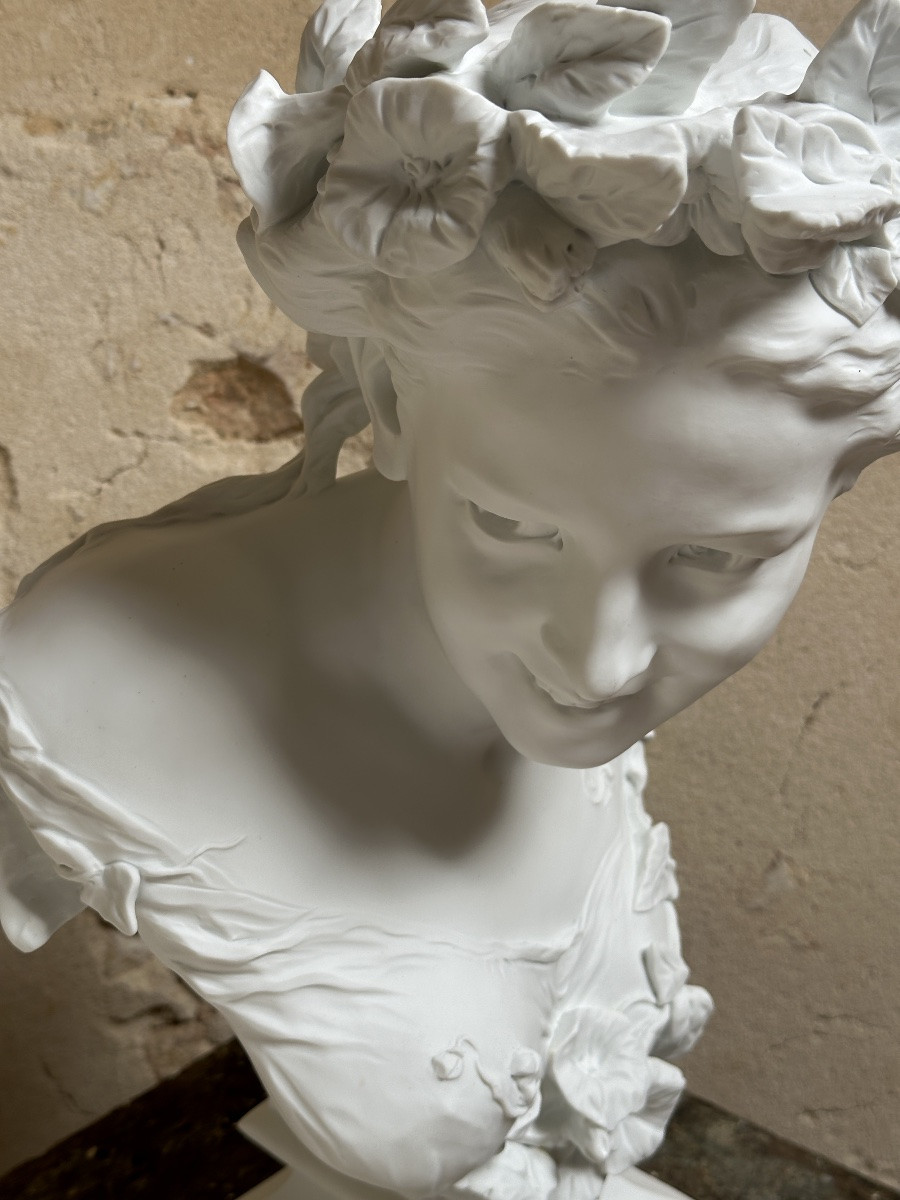


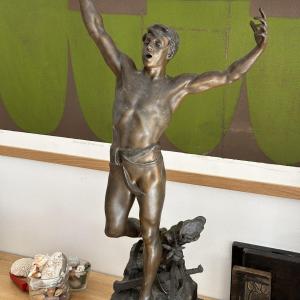
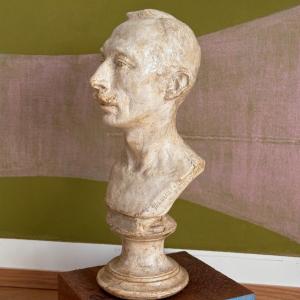
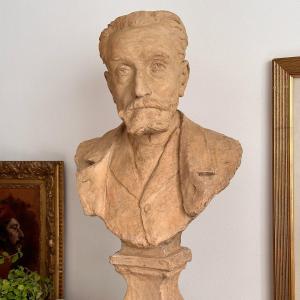
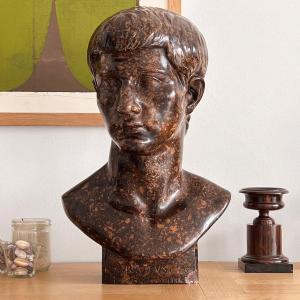
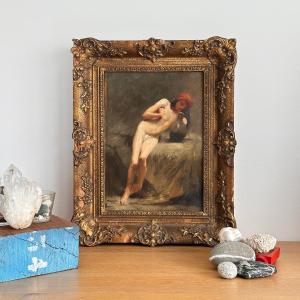
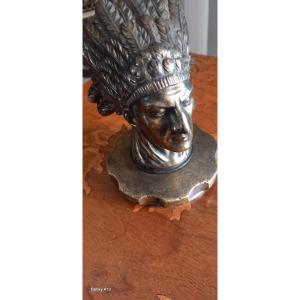








 Le Magazine de PROANTIC
Le Magazine de PROANTIC TRÉSORS Magazine
TRÉSORS Magazine Rivista Artiquariato
Rivista Artiquariato
